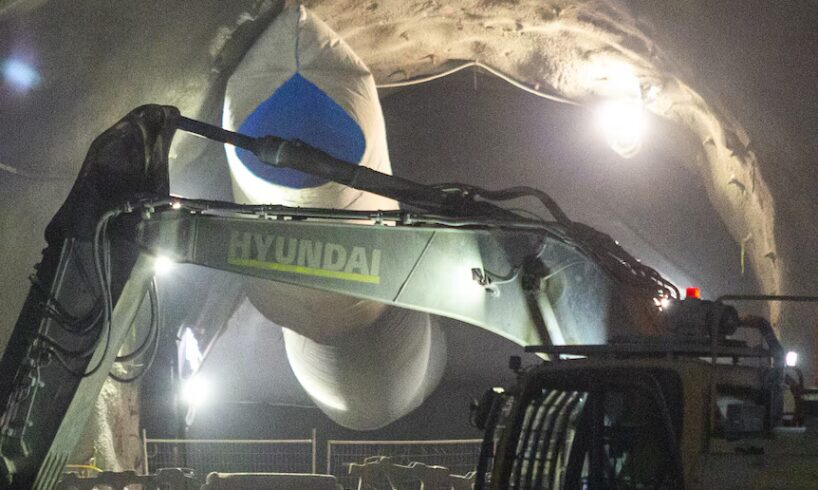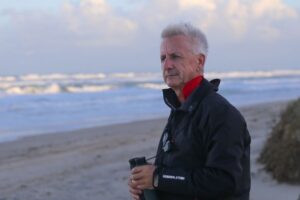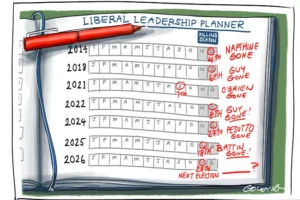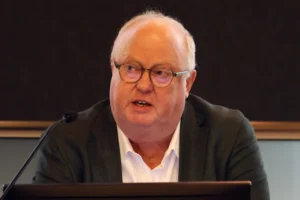
Snowy Hydro has confirmed it will need to acquire more funds to deliver the Snowy 2.0 renewable energy project, as costs continue to spiral beyond the previous $10 billion blowout.
The project was initially expected to cost $2 billion, which was subsequently revised twice to $12 billion.
But the company has now said it would need even more money.
Snowy Hydro has ordered principal contractor Future Generation Joint Venture (FGJV) to conduct a ”line-by-line” reassessment of the project before any additional funding will be sought.
“It’s become clearer to us that we’re not going to achieve the cost target we’ve set,” Snowy Hydro chief executive Dennis Barnes said.
Mr Barnes said he was “not happy” that the project would need more money, but took responsibility that the company “didn’t get this [2023] cost forecast right”.
“The contractor and all of the workers on the job have done a great job,” he said.
“It’s just costing us more to get that done.
“That’s obviously making me unhappy.”
The announcement comes less than a month after workers on the project were granted a pay rise of at least $50,000.
Dennis Barnes stands on the eastern edge of the project at Tangtangara Reservoir. (Supplied: Snowy Hydro Ltd)
The company said some of the “significant sources of cost pressure[s]” included productivity targets not being met, supply chain costs and that the fourth tunnel boring machine acquired by Snowy Hydro could not longer be covered by the project’s current funds.
The company announced it would acquire the $75 million tunnel boring machine in 2024, to get the project back on track.
“If we didn’t commit to a fourth tunnel boring machine … then the project would have been delayed by many, many months,” Mr Barnes said.
“A delay is much more costly than procuring a fourth tunnel boring machine.”
Snowy 2.0 construction is underway at the eastern intake tunnel. (ABC South East NSW: Floss Adams)
Mr Barnes declined to comment on how much extra money he believed the company would need.
“We’ve announced that we’ve got a problem,” he said.
“When we know what the size of the problem is, we’ll be transparent about that.
“We’ve got to let the rigour of the process work before we start to talk about the quantum.”
The cost reassessment process is expected to take up to nine months.
Cost and time blowouts
The Snowy 2.0 project is located in the NSW Snowy Mountains and involves building an underground hydropower station in Kosciuszko National Park, with 27 kilometres of tunnels linking Tantangara Dam to the Talbingo Reservoir.
The project is expected to provide up to 2.2 gigawatts of electricity to the national grid.
The Snowy 2.0 project is based in the NSW Snowy Mountains. (ABC South East NSW: Floss Adams)
The Snowy 2.0 project has faced significant cost and time blowouts since being announced by the Malcolm Turnbull government in 2017.
It initially had an estimated cost of $2 billion and was expected to deliver its first power in 2021, but is now scheduled to be complete in December 2028.
The cost was revised to $6 billion after a feasibility study was conducted, and later to $12 billion.
Mr Barnes said the project was still on track to meet its 2028 deadline, after previous tunnelling delays and work being stopped due to safety concerns.
“Quite a lot of the risks in the project are behind us,” Mr Barnes said.
“We were worried about geology in the power station cavern. We’re now more than halfway finished in the cavern.
Dennis Barnes says the project is on track to meet its 2028 completion date. (ABC South East NSW: Floss Adams)
“We’re pretty comfortable with the timeline.”
The project was 67 per cent complete, according to the company.
Costs followed closely
Snowy Hydro said the federal government was made aware of the company’s financial status in recent weeks.
In a statement, Minister for Climate Change and Energy Chris Bowen said the government would closely follow the cost reassessment process.
“This costs reassessment is disappointing and the government will be scrutinising its findings — this project must be delivered, but it must come at value for the taxpayer,” the statement read.
“When we came to government we discovered a project that had effectively stalled amid poor planning and a lack of oversight under the former Coalition government.
“Under us the project has made significant progress and is more than two-thirds complete, safety at the site has significantly improved and transparency means we’re acting early to deliver best value for taxpayers.”
Meanwhile, Industry and Science Minister Tim Ayres claimed that mismanaged initial planning led to the increased delivery costs.
Senator Ayres told ABC’s Afternoon Briefing program that the project had become “very expensive” but it would be delivered.
“The foundations of this were pretty shaky from the start, in terms of the costings,” he said.
“We’re about delivering the project now, actually getting it done, and you know that has been very hard work.”
Future Generation Joint Venture declined to comment.





